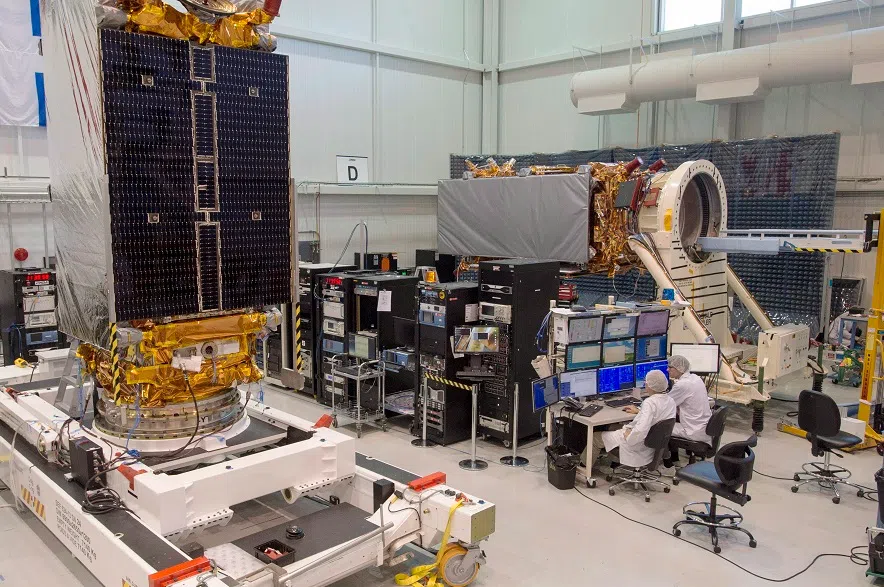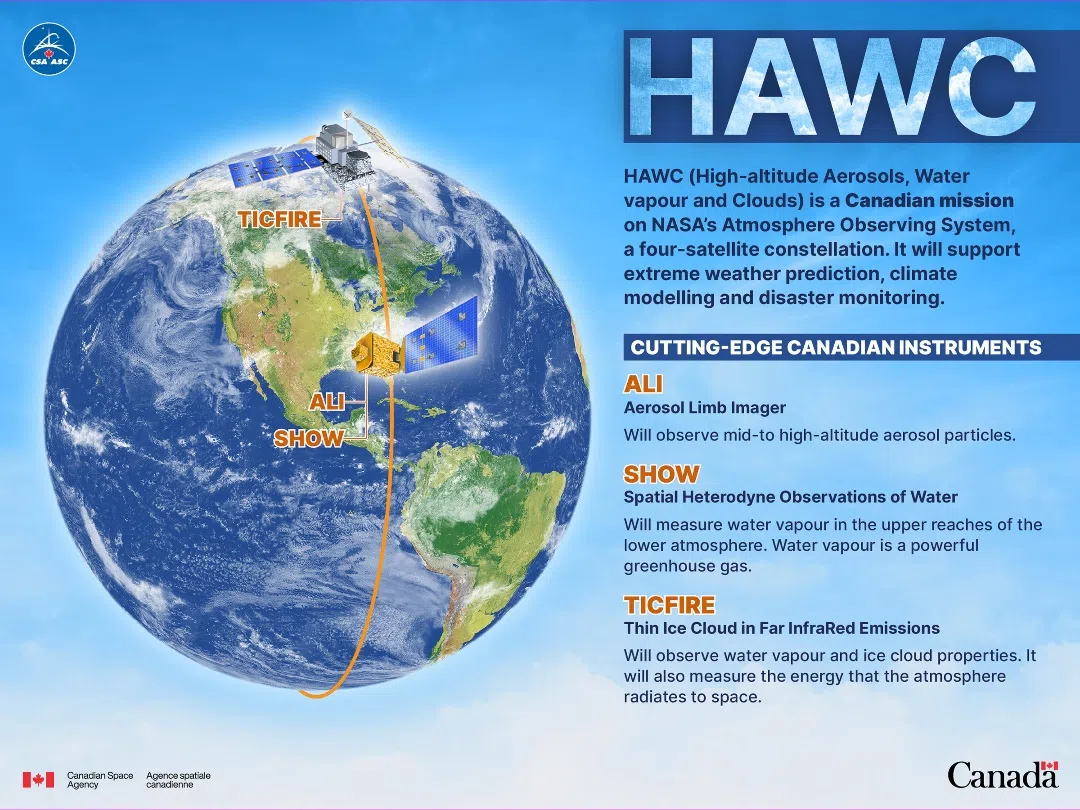Saskatchewan is expanding its expertise in cutting-edge space and satellite research and development as it receives new funding for a NASA-led mission.
The University of Saskatchewan’s (USask) High-altitude Aerosol, Water vapor and Cloud (HAWC) satellite mission just acquired $600,000 in a three-year investment from Innovation Saskatchewan through the Innovation and Science Fund.
The Innovation and Science Fund matches federal innovation funding dollars for projects from Saskatchewan universities, colleges and research institutes.
The Canadian mission will support extreme weather prediction, climate modelling and disaster monitoring through NASA’s Atmosphere Observing System. According to USask’s College of Engineering and Engineering Physics project leader Dr. Adam Bourassa, the four-satellite constellation is similar to a CAT scan of the atmosphere, and is slated to launch in 2031. USask has two team leads for three of the four satellites.
The HAWC is a NASA-led mission will deliver critical measurements to support key data for improved forecasts of weather, air quality, and climate.(Canadian Space Agency)
“The HAWC project highlights the contribution that USask is making in combating climate change on a global scale,” University of Saskatchewan president Peter Stoicheff said in a statement.
The new data the mission will provide should help scientists analyze, interpret and better understand factors contributing to climate change.
Read More:
- Provincial government launches new strategy to attract investment in Sask.
- Picking up the pieces: SpaceX comes to get space junk from Ituna farm
- Sask. company shows off innovative new rail technology
- Sask. launches $25M fund to develop emission-reducing technologies
- U of S astronomer reacts to NASA planet discovery
Investments in HAWC benefit the province as a whole according to Jeremy Harrison, the minister responsible for Innovation Saskatchewan.
“The economic, advanced training and employment opportunities created through this project will provide a tremendous benefit to Saskatchewan people,” said Harrison. He added the mission “elevates the province’s reputation as a leader in aerospace technology.”
The University of Saskatchewan is the lead institution out of a 14-university consortium that makes up the HAWC science team, along with the Canadian Space Agency, Environment and Climate Change Canada and the National Research Council Canada.
The HAWC mission consists of four cutting-edge climate science satellite instruments. Two were designed by USask: ALI (Aerosol Limb Imager), a satellite imager for aerosol profiling, and SHOW (Spatial Heterodyne Observations of Water), a satellite imager for water vapor.
Innovation Saskatchewan has provided over $18 million through the Innovation and Science Fund for projects at Saskatchewan institutions since 2018-19.
Other universities involved in the project are the Université du Québec à Montréal, University of Toronto, McGill University, University of New Brunswick, University of Sherbrooke, University of Waterloo, Wilfrid Laurier University, St. Francis Xavier University, Saint Mary’s University, University of Victoria, Dalhousie University, and the University of Western Ontario.












